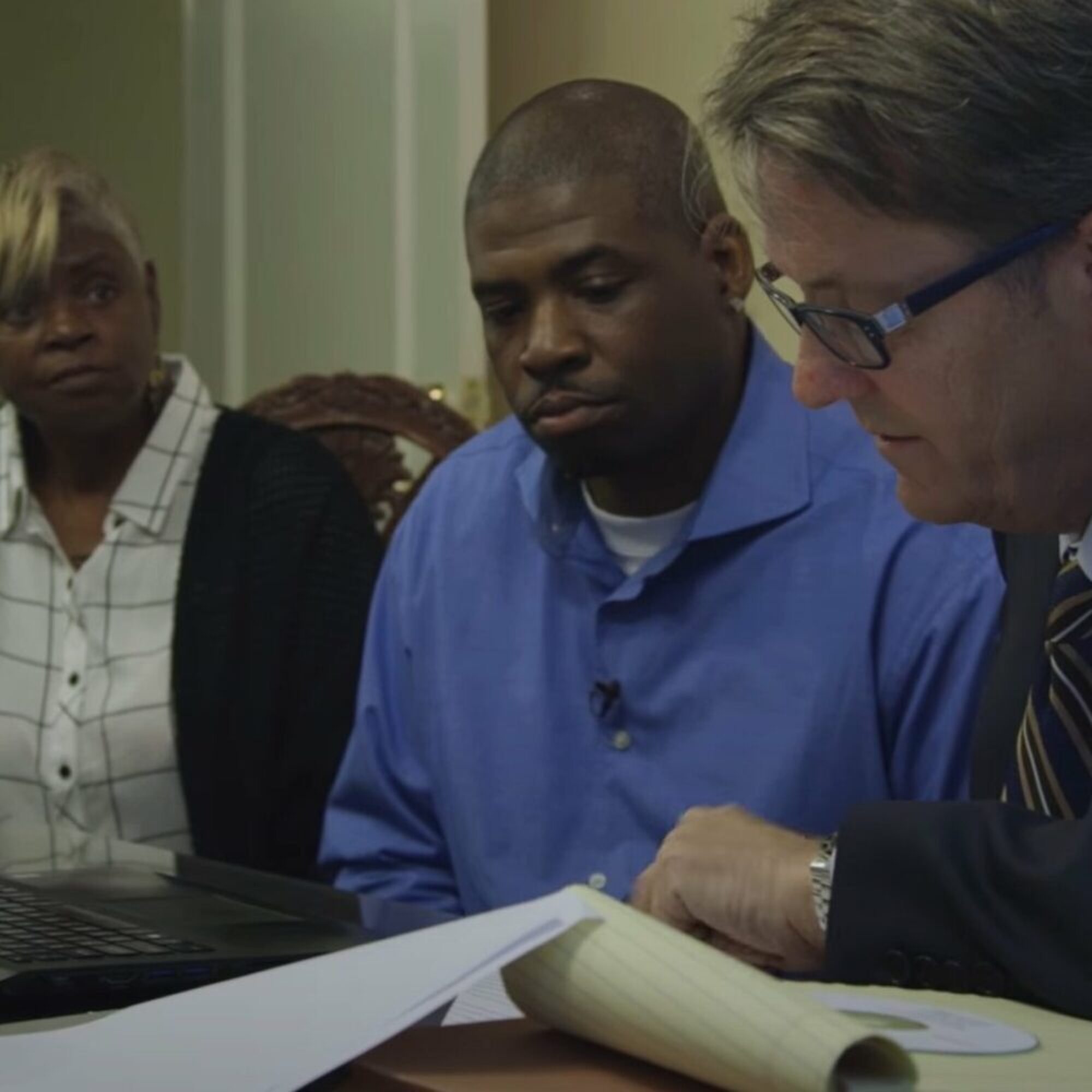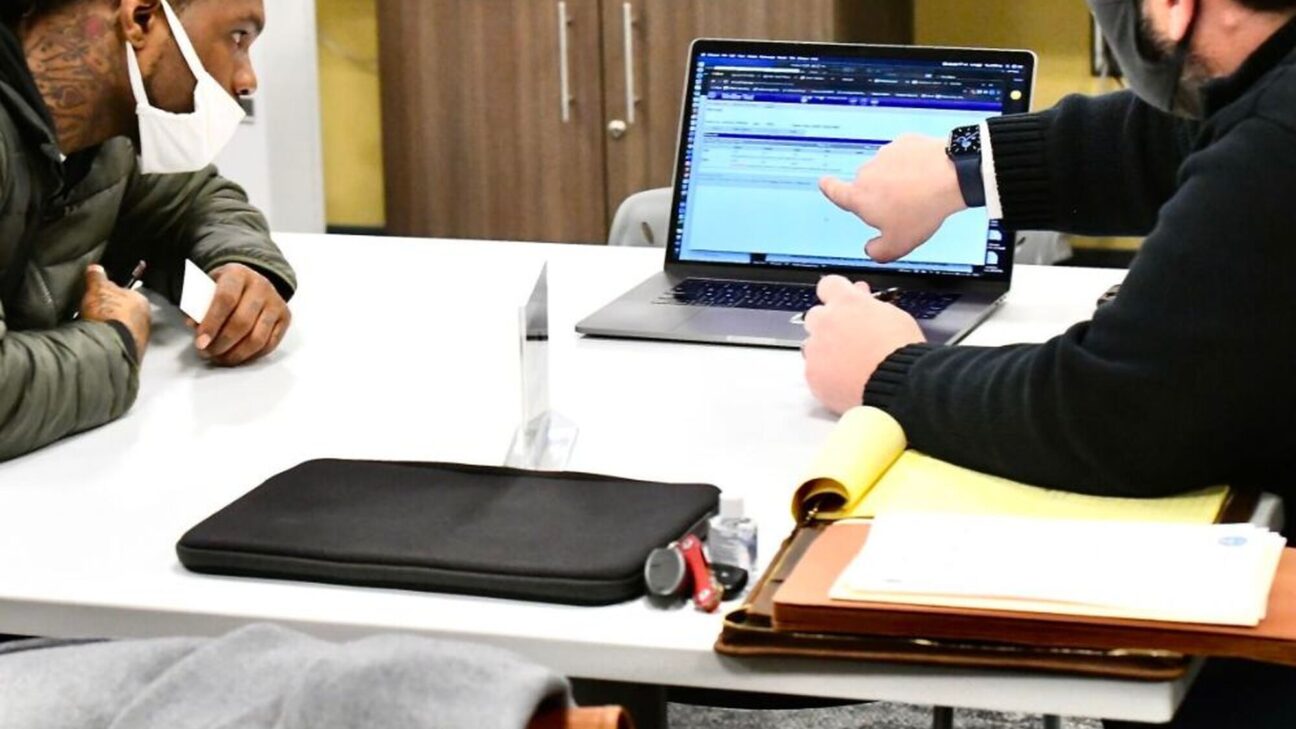This story was updated in January 2025.
When a person is arrested and booked into jail, prosecutors, defense counsel, and judicial officers know little about the person beyond their case file. Despite being equipped with such limited information, these system stakeholders make decisions that can be life-changing for the person charged and their family. Research shows that people who are detained pretrial—compared to people released—are more likely to plead guilty, be sentenced to jail or prison, and have longer sentences. Pretrial detention can place the person’s job, education, housing, and family supports at risk.
Silicon Valley De-Bug’s (De-Bug) participatory defense model seeks to transform a traditionally disempowering experience—watching a loved one navigate the pretrial phase—to a powerful experience of action and hope. It does this by bringing together family and community members to take actions that can impact their loved one’s case.
“Gail Noble, community organizer, tells her journey with participatory defense to fight for her son’s release.”
From Court Watching to Court Doing
Participatory defense is not a legal clinic or a case management service. Rather, it is a community organizing model for people facing charges, their families, and their communities. It allows people to learn from each other, impact the outcomes of cases, and transform the landscape of power in the court system.
Through regularly scheduled participatory defense meetings, impacted families learn from each other about how to partner with or encourage the public defender, examine police reports and court transcripts, and build a sustained community presence in the courtroom to let judges and prosecutors know the person facing charges is not alone. Using this model, families move out of the role of “court watching” and into one of “court doing.”
“People expand their sense of self and sense of agency from something that was supposed to crush them… They reclaim power from that loss,” explains Raj Jayadev, De-Bug co-founder and executive director.
A core activity is to hold weekly meetings where families and community members gather and share the knowledge they’ve accumulated through lived experience. People who have a loved one navigating the criminal legal system are asked to share three things:
- What is the name of your loved one?
- What procedural updates are there?
- What actionable steps can the De-Bug community take to support you?
“People expand their sense of self and sense of agency from something that was supposed to crush them… They reclaim power from that loss.”
The family member may return as often as desired to share updates and be supported by their peers. In this way, they can stay actively involved in their loved one’s case and serve as an agent of change.
From “Time Served” to “Time Saved”
According to De-Bug, when a family first joins a participatory defense meeting, “the refrain we say to them is that though the system intends to give your loved one ‘time served’—time incarcerated and away—you can turn ‘time served’ into ‘time saved.’ That is, with your participation, you can bring your loved one home.”
The participatory defense model acknowledges the role and power of family and community members in influencing what happens to a loved one. They can address concerns that a judicial officer might have about a person’s return to court or behavior while on pretrial release. They can participate in their loved one’s defense, contributing to the efforts of the often overworked, underresourced, and overburdened public defense counsel. Family and community members also learn how to read police reports, identify witnesses, and gather evidence. Their presence in the courtroom can tell judicial officers and prosecutors that the person facing charges is not alone.
Through the efforts of participatory defense meetings across the country, thousands of years have been “saved.” According to De-Bug, as of January 2023, families and communities have saved over 25,000 years of incarceration.
“Their journey to liberation need not be a solitary walk.”
Jayadev sees community as a powerful support to each person navigating the criminal legal system. “Their journey to liberation need not be a solitary walk,” he says.
Principles of Participatory Defense
The theory behind participatory defense is simple: when those oppressed by systemic injustice find ways to activate their voice for community change, they begin to co-create more equitable and just systems and processes. The participatory defense model is guided by three principles:
- Family and community strength can play a pivotal role in stopping and reducing incarceration for a loved one and a community
- Families and communities can be even more powerful when taking the role of organizer and agent of change, rather than service recipient
- By working on individual cases, communities can build the movement of directly impacted peoples to hold the actors of the court accountable, make systemic changes, and ultimately end mass incarceration.
Participatory defense hubs now exist in nearly 40 cities across the United States. Person by person, family by family, participatory defense meetings are contributing to the transformation of the criminal legal system.
Learn more about Participatory Defense and training available for community organizing groups.
About the Author
Aila Malik is a lawyer and nonprofit executive. Aila has been a change-agent in her community and the nonprofit sector for over two decades.
About Silicon Valley De-Bug
Silicon Valley De-Bug (De-Bug) was founded in 2001 as a local newspaper and multimedia platform. Its early mission was to listen deeply and lift up the voices of community members left unseen during the Silicon Valley technology boom. Through print media, De-Bug elevated their stories and brought new perspective and voice to the process and pace of industry growth.





